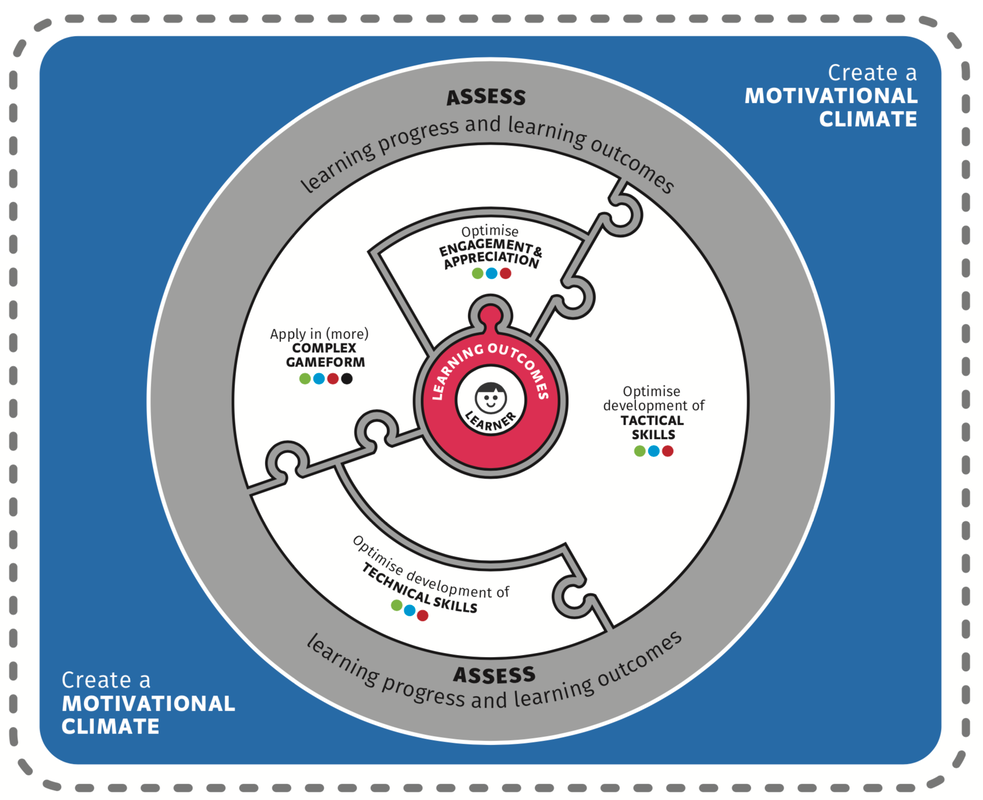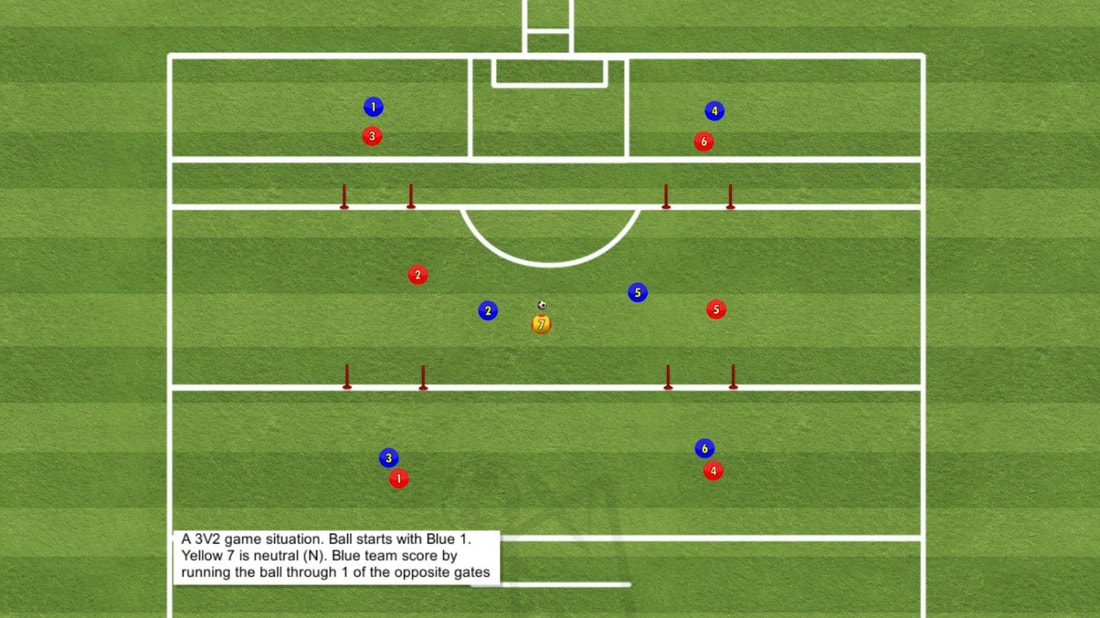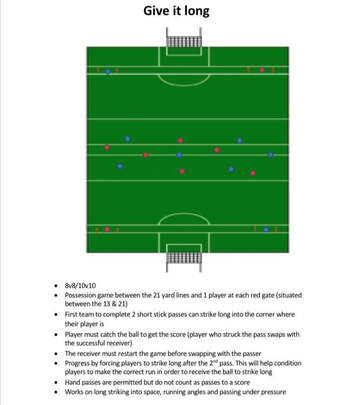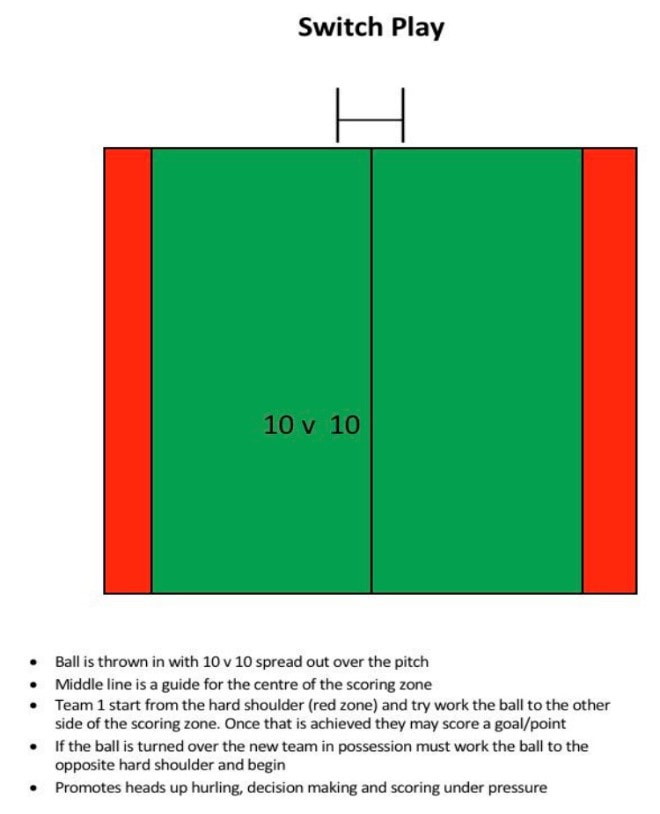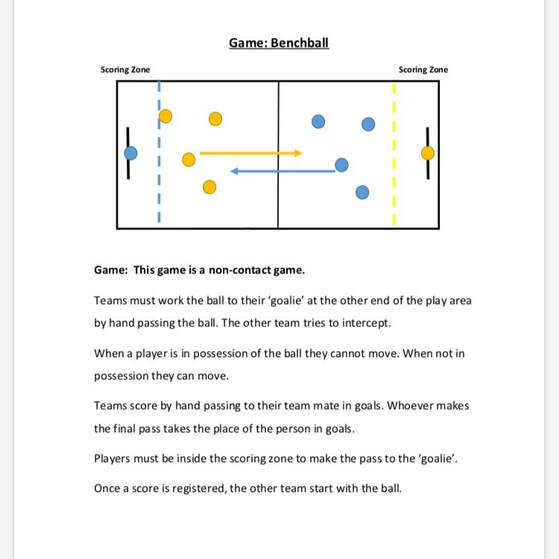Director and founder of Active Sports Coaching and part time PE lecturer at Mary Immaculate College, Limerick
Twitter: @barrymullane1
Email: [email protected]
- “Every pass must have a thought” – Dennis Bergkamp
- Use and receive the ball under pressure
- Repetition without repetition
Before you sit down and design your games, or your coaching session, it’s important to note that a games based approach (GBA) does not just mean 2 goalposts, 2 teams and play a match. A GBA means, using multiple goals, zones, gates, keeping possession, game based scenarios, small sided games (SSG), wide sided games (WSG), long sided games (LSG) and overload games.
Ometto et al., (2018) described a GBA and in particular using SSG as an opportunity to practice performance in a sub scaled version of the whole formal game. These games provide opportunities to experience physical, physiological, cognitive and technical demands of the sport. When designing or adapting the games, always keep in mind the demands of the sport (see Fig 1). Ask yourself the question; what will the players experience during the match? If your sport is soccer, are your players being afforded the opportunities to look up and pass under pressure? In my own coaching, my aim for each session is to ensure the players are able to make a decision with each ball they get and use the ball under pressure.
(Fig 1) where does your sport fit into Dave Alred’s matrix?
(Fig 2)
Hristovski et al., (2006) discussed the ‘metastable performance region’ when highlighting that the environment you create for your players or athlete is crucial. If you place a boxer too near a punching bag, their jabs will suffer. Place the boxer too far and their uppercuts will suffer due to an over use of the jab! The same applies to coaches who constantly use the same type of game. Using SSG for the majority of a coaching session can lead to overuse injury, bad habits developing and a neglect of other technical skills.
When you are designing your games, think about what you are trying to improve. A coach should isolate the part of the game they wish to improve and then design the session/game around that. As mentioned earlier, one should not mistake a GBA as just playing SSG. A coach needs to be cognisant of lengthening or widening the playing pitch. It worth noting Gabbet, Jenkins and Abernethy’s (2009) belief that realistic improvements in fitness and performance happen when sessions stimulate the physiological and technical demands of competition.
(Fig 3)
In my professional capacity as director of Active Sport Coaching, we teach primary school children fundamental movement skills through a GBA. Simple chasing or tag games like stuck in the mud or freeze tag can teach children the fundamentals of movement in team sports. Tag games help children learn about occupying space, evading opponents, making decisions like ‘will I run or stay? Will I help my friend or will I save myself?
Similarly, fun games like over the river or bench ball (Fig 4) help develop technical skills such as throwing and catching in a fun and challenging environment. Games help develop children technically, physically, cognitively and socially.
(Fig 4)

